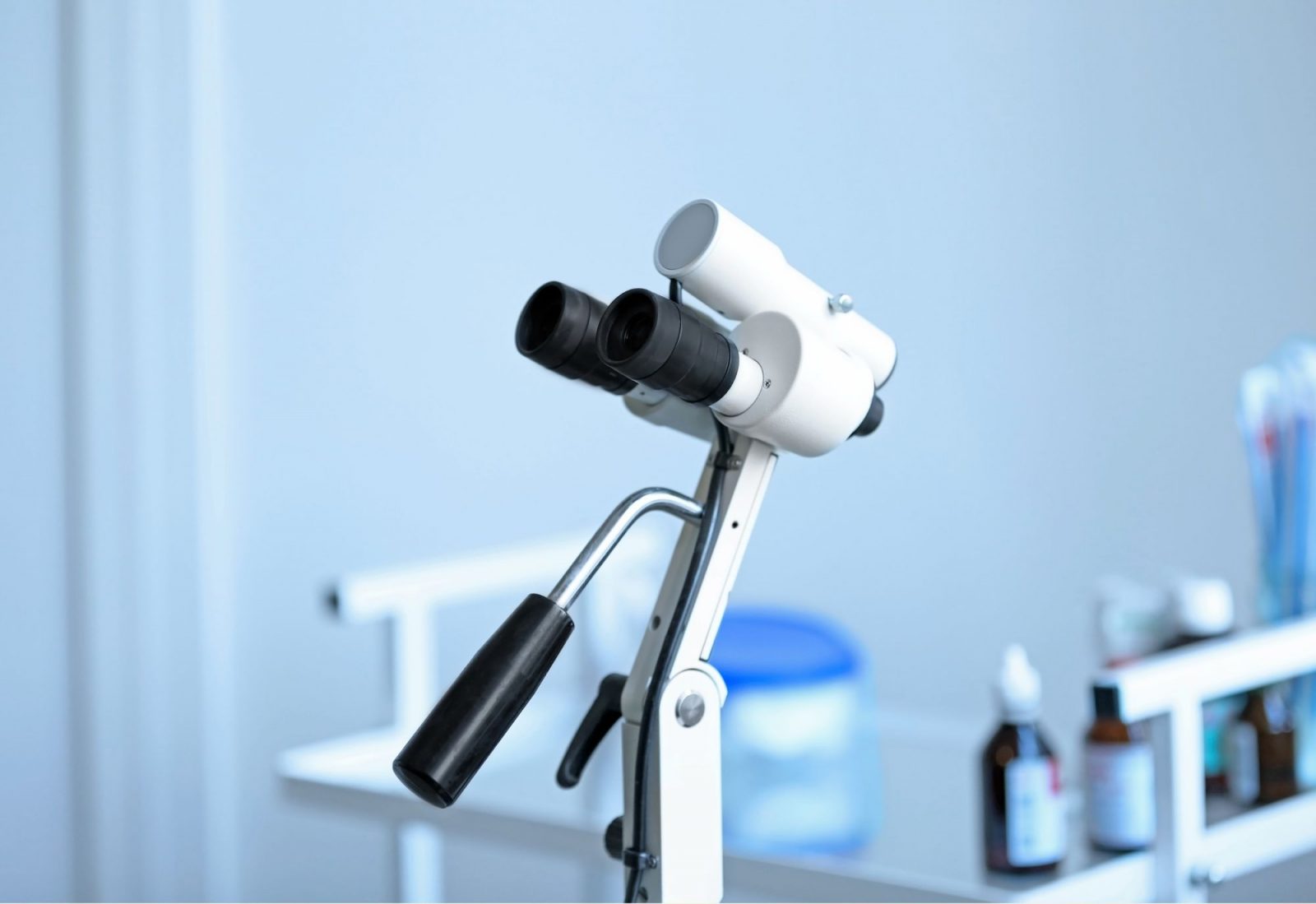Colposcopy – A Detailed Examination of the Cervix
Colposcopy is an examination of the cervix using a colposcope. This modern diagnostic device resembles a microscope on a stand and is positioned in front of the patient, allowing for non-contact examination. It is equipped with a powerful light and a system of lenses that can magnify the cervical mucosa up to 40 times, allowing the gynecologist to detect potential changes more easily and accurately, which are not visible to the naked eye.
Colposcopy is most often performed after an abnormal (CIN1/LSIL; CIN2, CIN3/HSIL, AGC-NOS, AGC, ASC-H) or suspicious (ASC-US) PAP test. The procedure is painless, short, and very similar to a regular gynecological examination.
During colposcopy, the cervix is coated with exceptional solutions that help highlight the differences between healthy tissue and potential changes, allowing the exact location of abnormal PAP cells to be identified.

Colposcopy – The Importance of Preventive Examinations
The procedure works by the gynecologist using a speculum (the same instrument used in a regular gynecological exam) to provide a clear view of the cervix, which the colposcope then magnifies and illuminates.
If changes are observed, a targeted biopsy can be taken immediately for further analysis and diagnosis, enabling the planning of the most appropriate treatment for the patient and ensuring timely care.
Thanks to its precision, the colposcope is an indispensable tool in modern gynecology, providing fast and reliable diagnostics while giving patients confidence in the accuracy of their results.
Colposcopy is a safe, reliable, and routine diagnostic method that plays an essential role in the prevention and early detection of precancerous and cancerous changes of the cervix, vagina, and vulva. With timely detection and intervention, the risk of developing more serious malignant diseases is significantly reduced, treatment outcomes are greatly improved, and potential interventions are much less invasive.
Regular preventive check-ups and timely diagnostics are key allies in maintaining health.


Dimitrije Milojković, dr. med.
Medical team
With extensive experience in diagnosing cervical changes, the gynecology team at IMC Priora uses modern technology and minimally invasive colposcopy methods to ensure early detection, accurate monitoring, and personalized care, raising the standards of safety and quality in women’s health.
